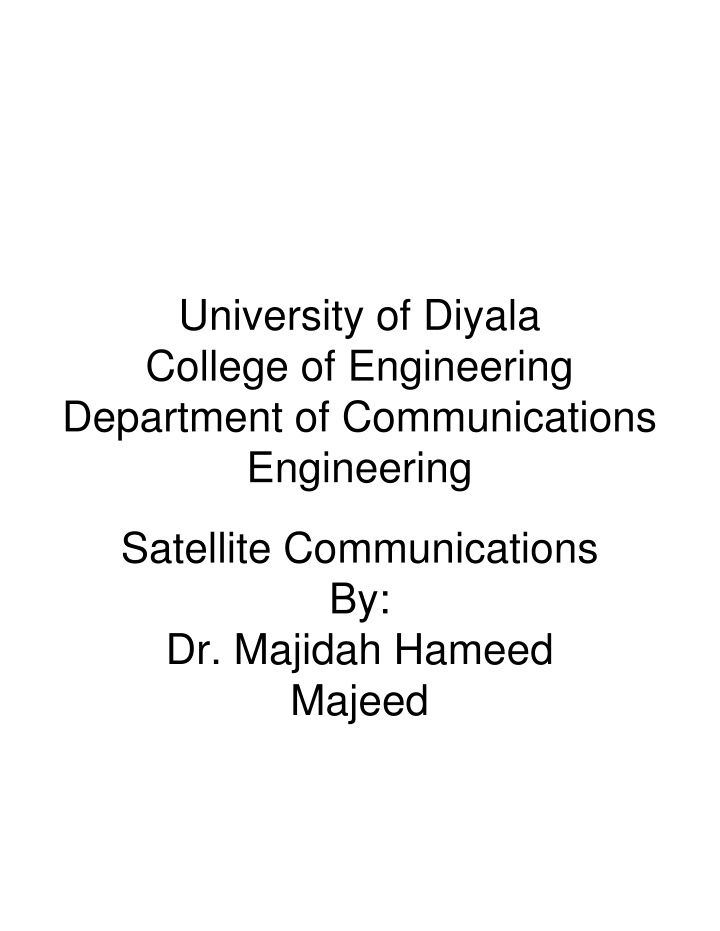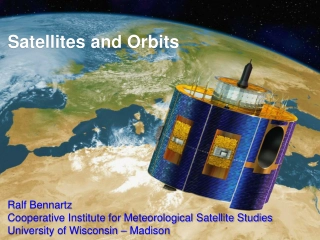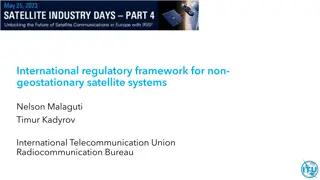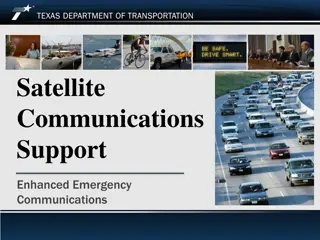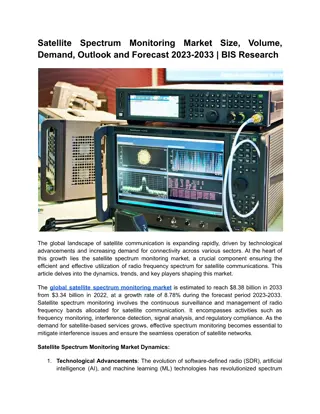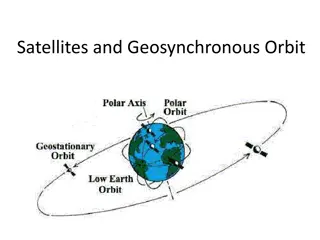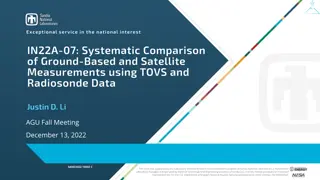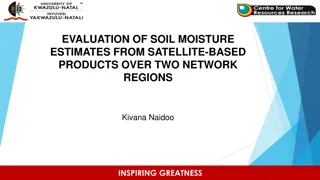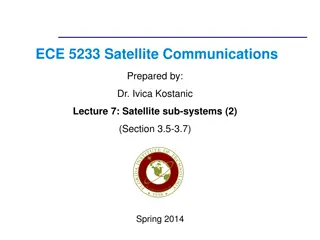Satellite Communications Fundamentals
Dive into the world of satellite communications with a focus on link budget analysis, antenna characteristics, EIRP, basic transmission theory, and propagation losses in free space. Explore key parameters and concepts essential for designing satellite networks.
Download Presentation

Please find below an Image/Link to download the presentation.
The content on the website is provided AS IS for your information and personal use only. It may not be sold, licensed, or shared on other websites without obtaining consent from the author.If you encounter any issues during the download, it is possible that the publisher has removed the file from their server.
You are allowed to download the files provided on this website for personal or commercial use, subject to the condition that they are used lawfully. All files are the property of their respective owners.
The content on the website is provided AS IS for your information and personal use only. It may not be sold, licensed, or shared on other websites without obtaining consent from the author.
E N D
Presentation Transcript
University of Diyala College of Engineering Department of Communications Engineering Satellite Communications By: Dr. Majidah Hameed Majeed
Chapter two Communication satellite link budget Note add additional sections 2.1 Introduction The first step in designing a satellite network is performance of a satellite link budget analysis. The link budget will determine what size antennae to use, power amplifier requirements, link availability and bit error rate (BER). What is a link budget? Simply put, a link budget is the sum and total of all gains and losses in the radio connection between two parties from end to end, including antenna's, feed lines and the path between the antenna's, but also the relevant portions of the transmitter and the receiver, as well as miscellaneous gains and losses. A link consists of three parts as shown in fig. (2.1) For a line-of-sight radio link, the link budget might look like this: Prx = Ptx + Gtx - Ltx - Lfs - Lm + Grx - Lrx
Fig 2.1 Configuration of link In order to add all these factors, all power levels must be specified in dBm or dBW. For example, if the transmitter puts out 10 Watts (or 10,000 mW) its power is 10,000 times the reference power of 1 mW. Since 10,000 is ten to the fourth power, this gives us a transmitter power of 40dBm. To clarify:
2.2 Main Link Parameters Antenna gain EIRP Free space loss Atmospheric absorption loss Receiver noise power density Antenna noise Noise temperature Noise figure Equivalent input noise temperature G/T 2.3 Antenna gain Is the most important antenna characteristic in link calculations? The gain of parabolic antennas that are often used in satellite communications is where is aperture efficiency (50-70%),D is antenna diameter, is wavelength
2.4 EIRP EIRP = Effective isotropic radiated power EIRP is a product of transmit antenna gain (Gt) and transmitter output power (Pt), EIRP = PtGt EIRP variation is typically due to antenna thermal distortion, satellite attitude instabilities, atmospheric disturbance (i.e. rain) and unit thermal and aging effects. Example: Pt = 100 W = 20 dBW, The signal power also diminishes as it propagates to Gt = 1000 = 30 dBi the earth and this is called the free space loss . Example : (a) An earth station transmits with 10 watts. Its antenna has a gain of 50 dB What is it EIRP? Solution: 2.5 Basic transmission theory
A basic quantity in link budget is propagation loss in free space. In a satellite link, it is assumed that transmit and receive antennas face each other but are separated by a sufficient distance d [m] in free space. Gains of the transmit and receive antennas: Gt and Gr; Effective area of receive antenna Ar; Transmit power Pt; Wavelength Power density at the reception point: pd = Pt Gt / 4 ?2 = flux density Pr = Pd . Ar
The link equation can be separated into three terms associated with the transmitter, receiver, and free space( path loss ) , respectively. Then Pr = Pt Gt Gr / LF In decibel notation, the equation becomes The received power in dBW is therefore given as the sum of the transmitted EIRP in dBW plus the receiver antenna gain in dB minus a third term, which represents the free-space loss in decibels. Normally, the frequency rather than wavelength will be known, and the substitution = c/f Where c = 3*10^8 m/s with frequency in megahertz and distance in kilometers, Example : The earth station has an EIRP of 60 dB and the satellite antenna has a gain of 52 dB at 12 GHz . what is the received power at the satellite. Solution :
